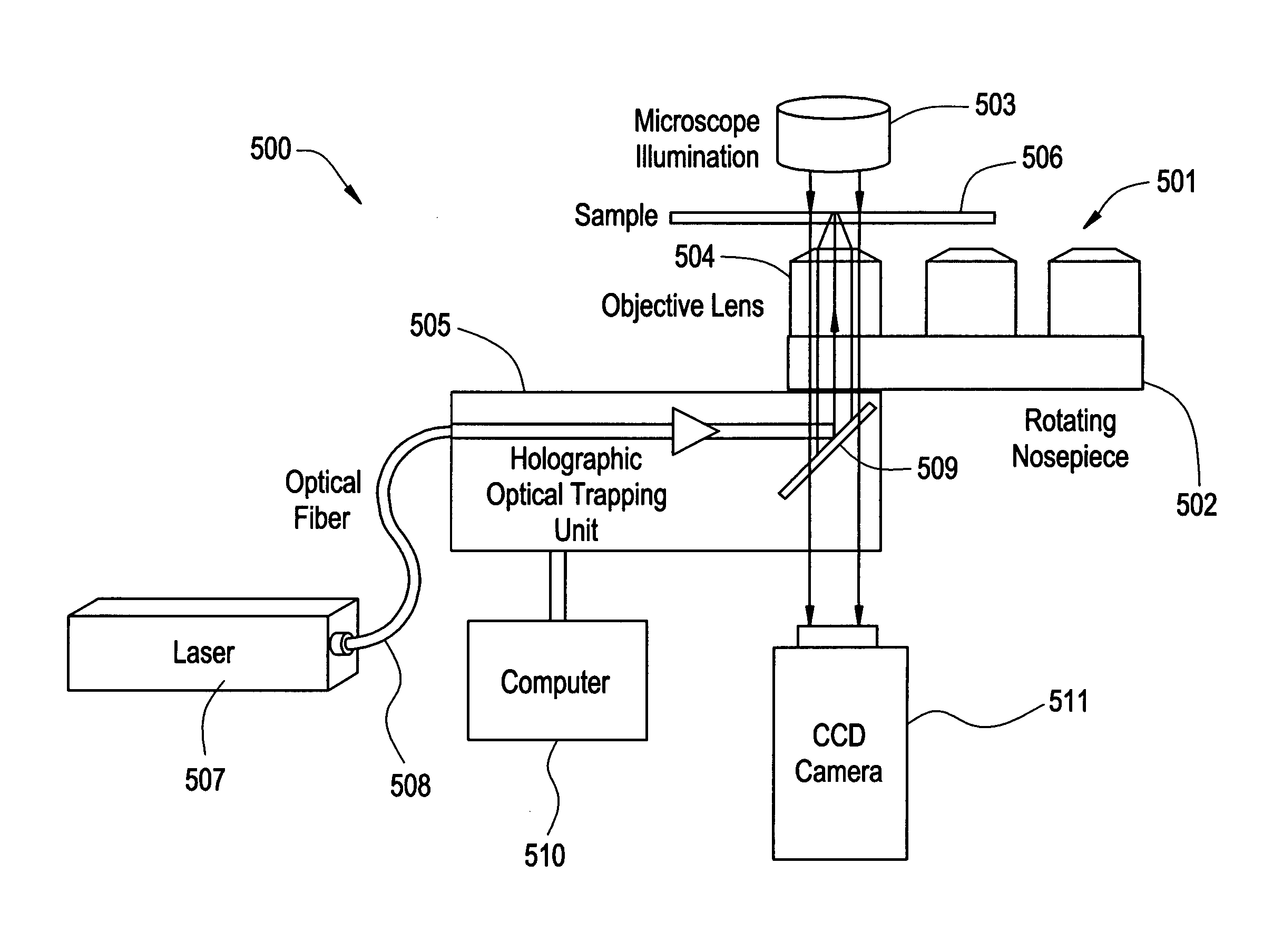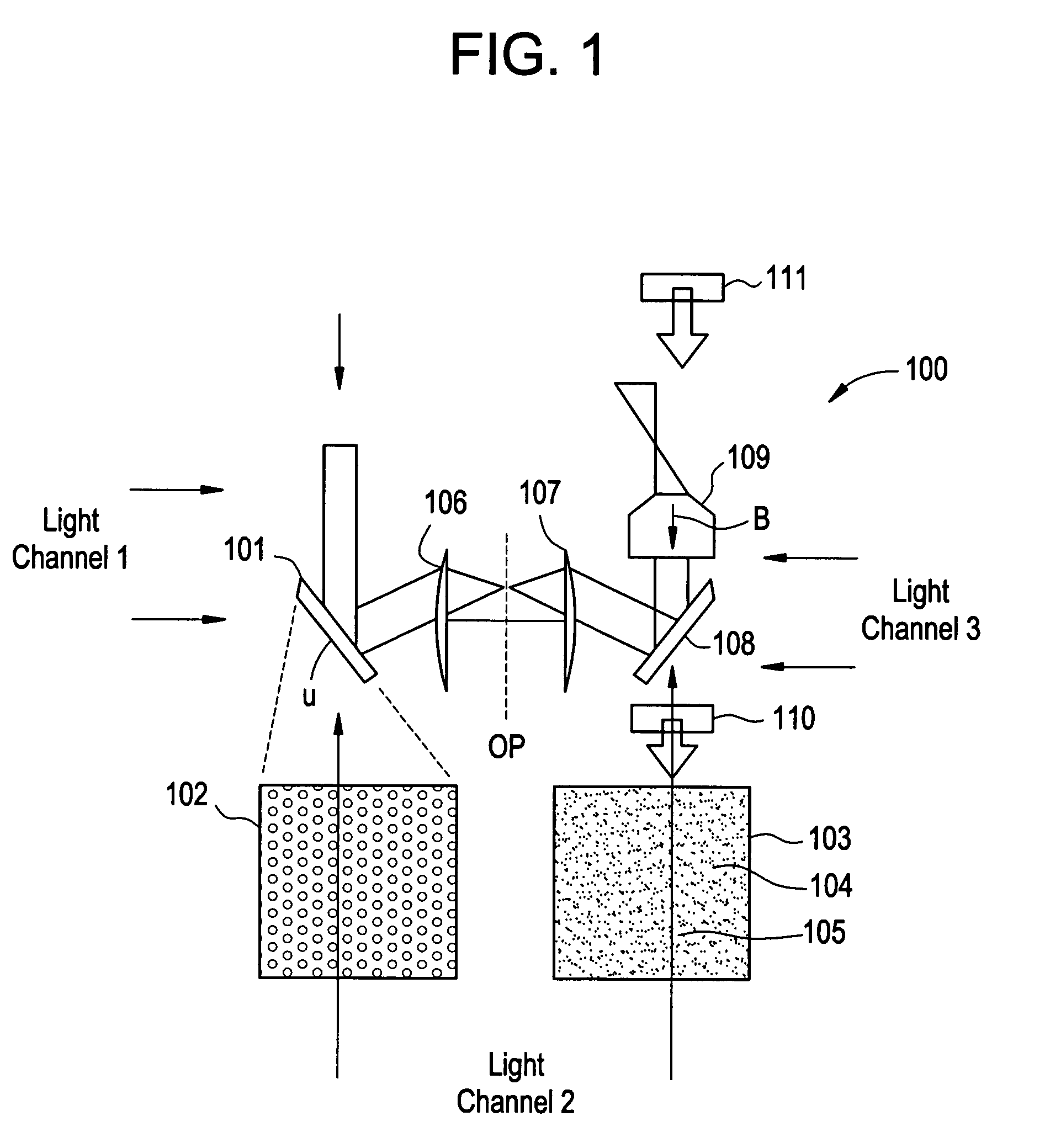System and method of sorting materials using holographic laser steering
a laser steering and laser steering technology, applied in the field of laser steering system and method of sorting materials, can solve the problems of inefficiency of traditional methods for purifying islet cells, inability to efficiently select offspring genders, etc., to reduce damage risk, eliminate hot spots, and reduce power
- Summary
- Abstract
- Description
- Claims
- Application Information
AI Technical Summary
Benefits of technology
Problems solved by technology
Method used
Image
Examples
Embodiment Construction
[0075]In a holographic optical trapping apparatus or system 100 as illustrated in FIG. 1, light is incident from a laser system, and enters as shown by the downward arrow, to power the system 100.
[0076]A phase patterning optical element 101 is preferably a dynamic optical element (DOE), with a dynamic surface, which is also a phase-only spatial light modulator (SLM) such as the “PAL-SLM series X7665,” manufactured by Hamamatsu of Japan, the “SLM 512SA7” or the “SLM 512SA15” both manufactured by Boulder Nonlinear Systems of Lafayette, Colo. These dynamic phase patterned optical elements 101 are computer-controlled to generate the beamlets by a hologram encoded in the medium which may be varied to generate the beamlets and select the form of the beamlets. A phase pattern 1–2 generated on the lower left of FIG. 1 produces the traps 103 shown in the lower right filled with 1 μm diameter silica spheres 104 suspended in water 105. Thus, the system 100 is controlled by the dynamic hologram...
PUM
 Login to View More
Login to View More Abstract
Description
Claims
Application Information
 Login to View More
Login to View More - R&D
- Intellectual Property
- Life Sciences
- Materials
- Tech Scout
- Unparalleled Data Quality
- Higher Quality Content
- 60% Fewer Hallucinations
Browse by: Latest US Patents, China's latest patents, Technical Efficacy Thesaurus, Application Domain, Technology Topic, Popular Technical Reports.
© 2025 PatSnap. All rights reserved.Legal|Privacy policy|Modern Slavery Act Transparency Statement|Sitemap|About US| Contact US: help@patsnap.com



